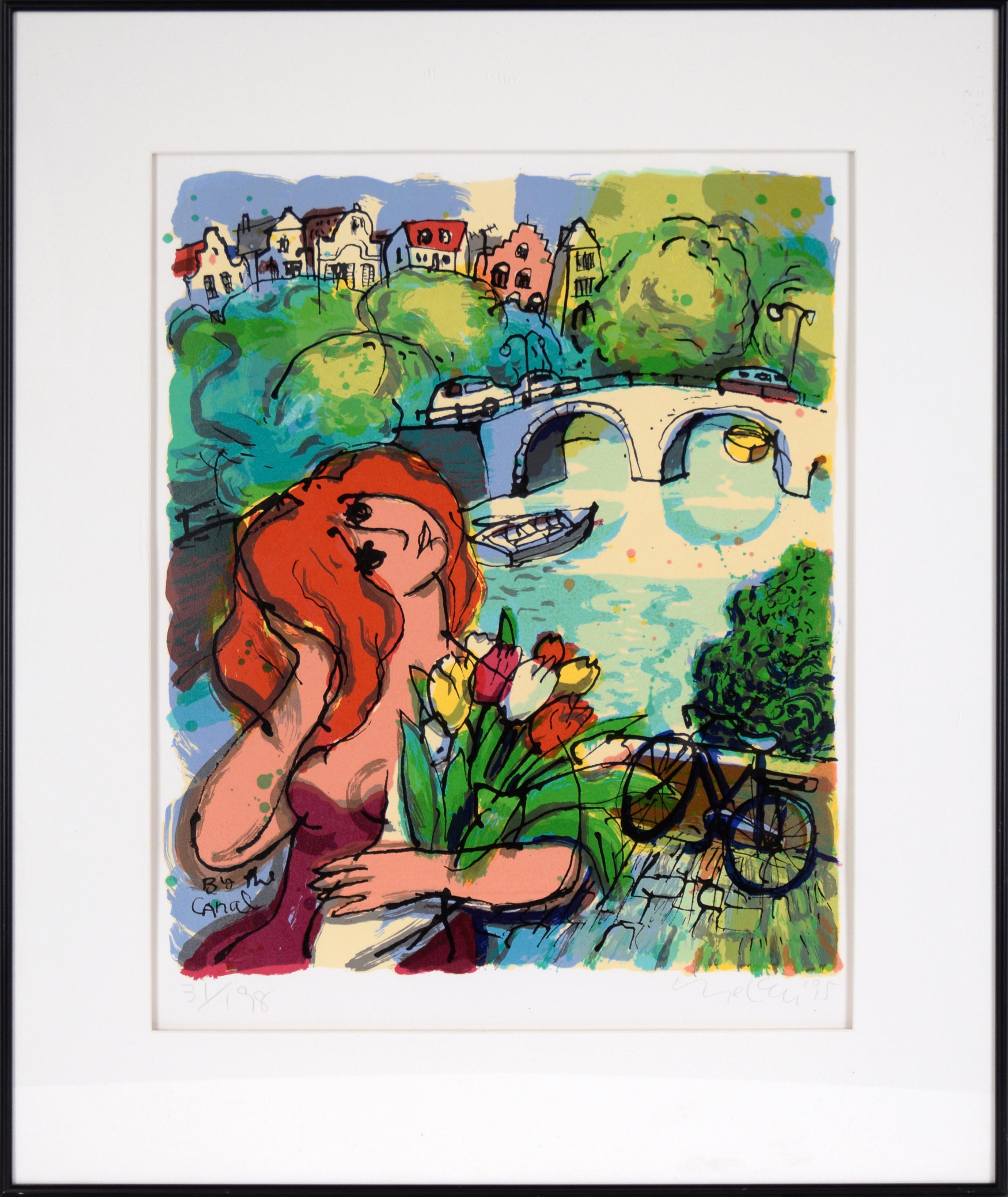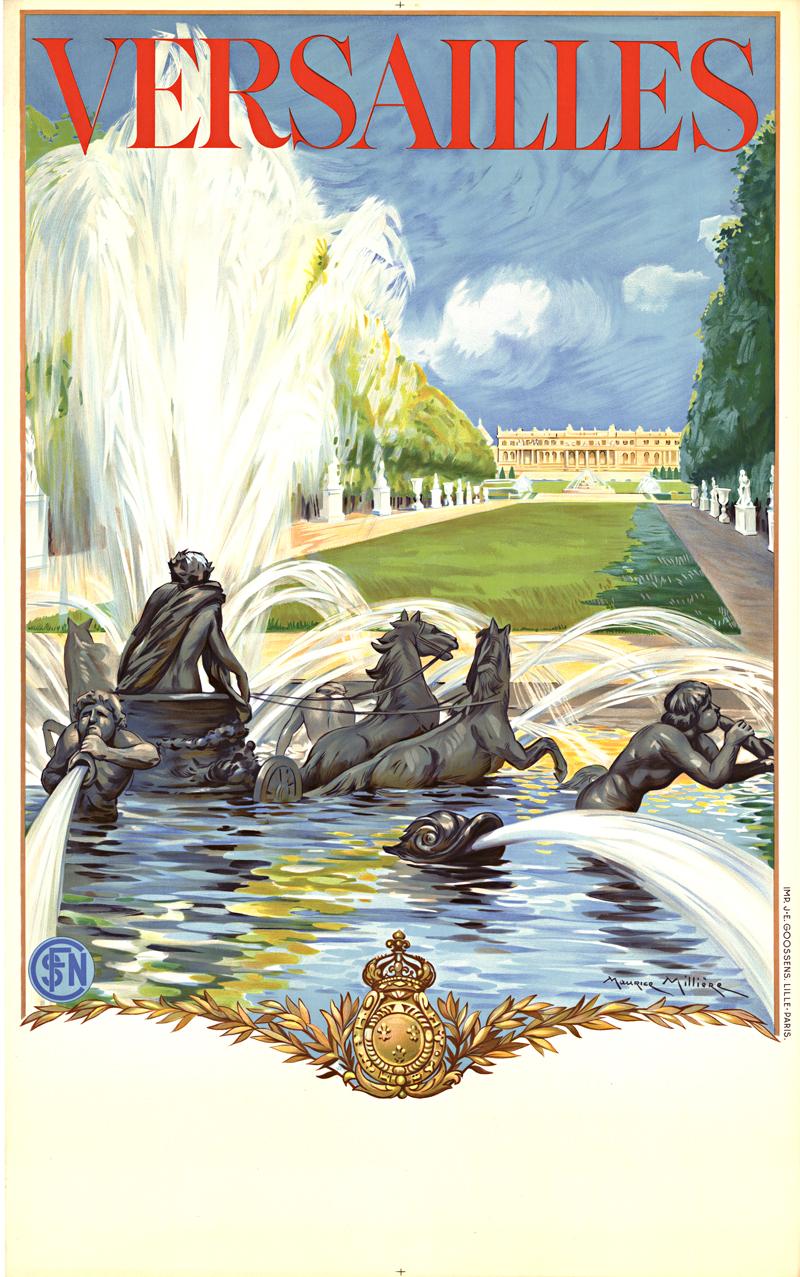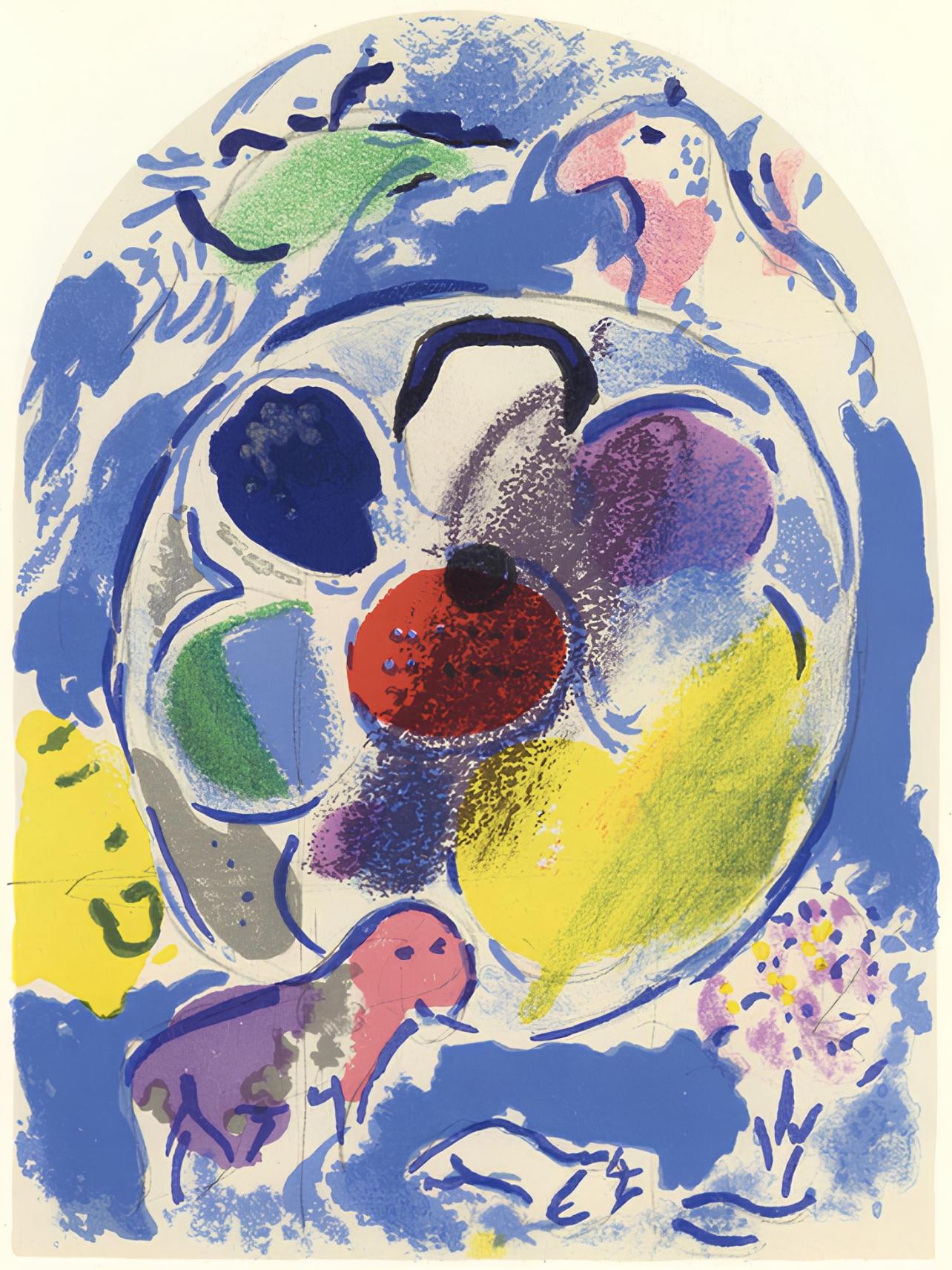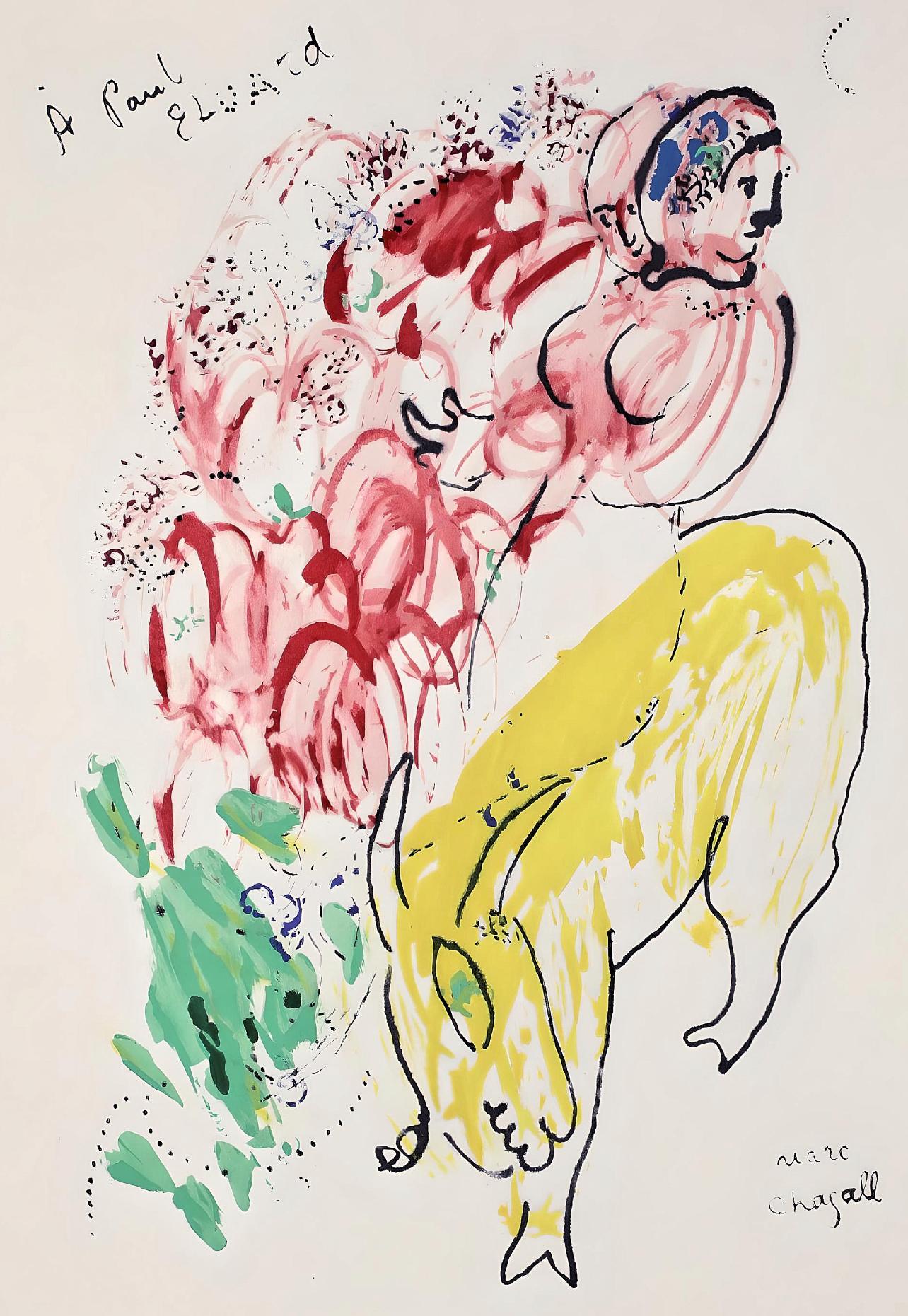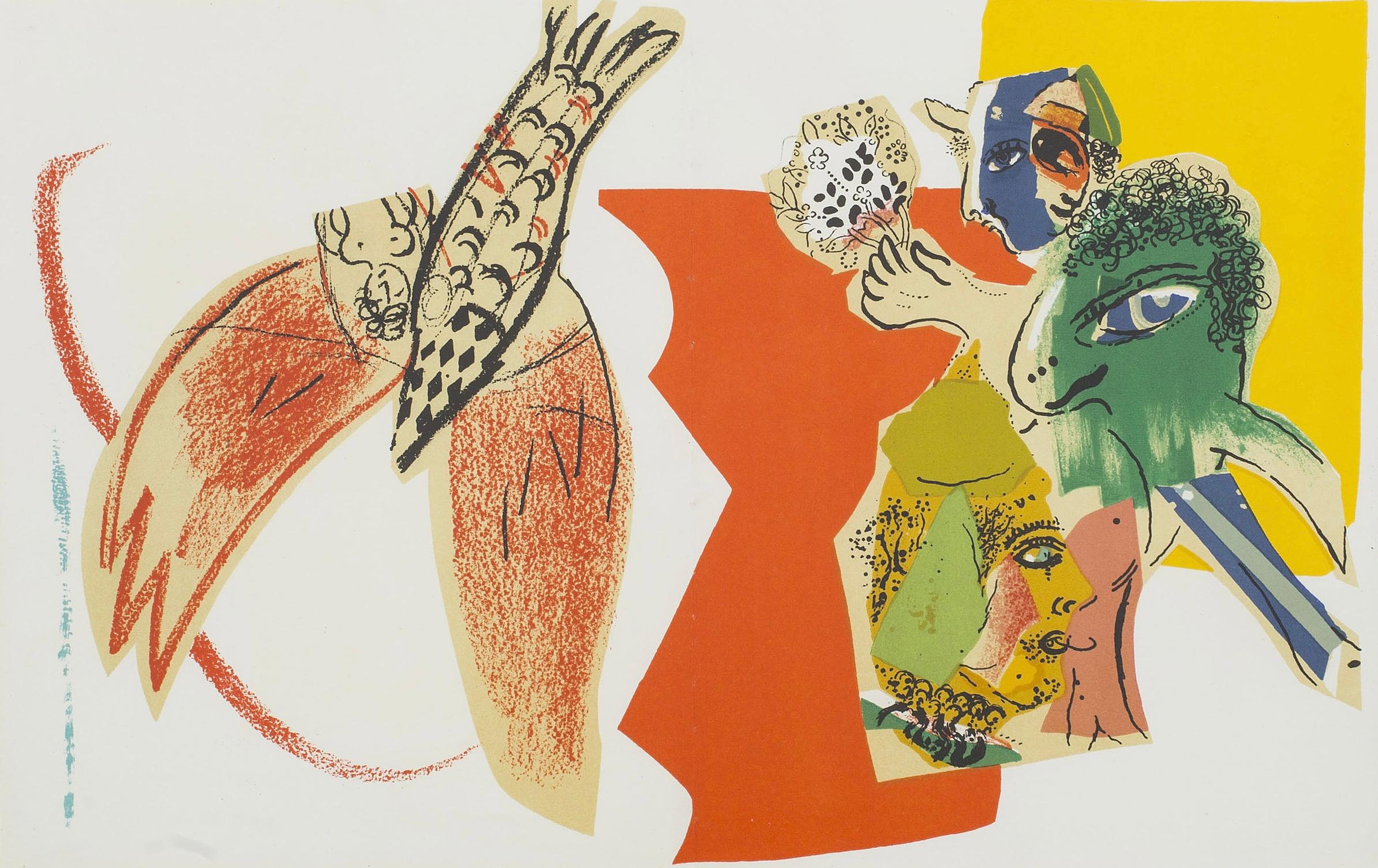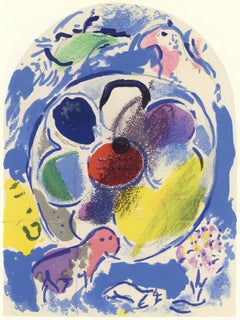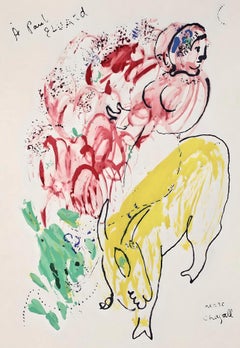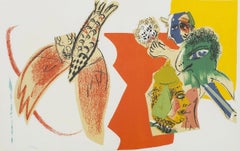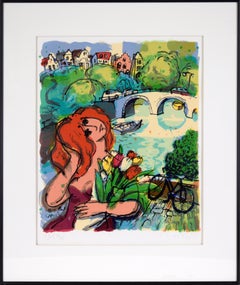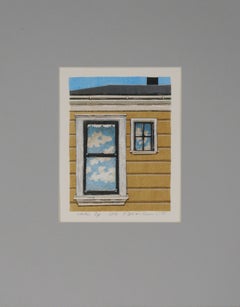Items Similar to Chagall, The daughter-in-law of Judah (Mourlot 117-46; Cramer 25) (after)
Want more images or videos?
Request additional images or videos from the seller
1 of 12
Chagall, The daughter-in-law of Judah (Mourlot 117-46; Cramer 25) (after)1956
1956
About the Item
Lithograph on vélin des Papeteries du Marais paper. Inscription: Unsigned and unnumbered, as issued. Good condition. Notes: From the volume, Marc Chagall, Dessins Pour La Bible, Verve: Revue Artistique et Littéraire, Vol. VIII, N° 33 et 34, September, 1956. Published by Éditions de la revue Verve, Paris, under the direction of Tériade, éditeur, Paris; printed by Mourlot Frères, Paris, September 10, 1956 in an edition of V̅MD. Excerpted from the volume (translated from French), This double issue of Verve is dedicated to the full reproduction in héliogravure of the one hundred-five plates etched by Marc Chagall, between 1930 and 1955, for the illustration of the Bible. The artist composed especially for the present work, sixteen lithographs in color and twelve in black, as well as the cover and the title page. This volume was completed and printed on September 10, 1956, by the Master Printers Draeger Frerés for héliogravure, and by Mourlot Frères for lithography. Excerpted from Poppy Sfakianaki, ‘La revue Verve (1937–60): Un tremplin pour la carrière de Tériade dans les éditions d’art’, Journal of European Periodical Studies, 4.2 (Winter 2019), 70–89, In 1937, Tériade (1897-1983) met David Smart (1892-1952), the American publisher of Esquire magazine, who offered him to the opportunity to collaborate on the creation of 'the most beautiful magazine in the world'. Smart recognized in Tériade not only his ability as a publisher and knowledge of art history, but also his professional network and the name he made for himself in the Parisian art world—all crucial advantages for an editorial business. Having had the commercial conviction that beauty "sells", Smart intended to address the American public, attracted to French art, including Modern art, and the myth of artistic life in Paris. For his part, Tériade saw the proposed collaboration as an opportunity for a foray into the American market—a powerful ally of modern art in France. Éditions de la Revue Verve was founded in November 1937, largely funded by Smart, and directed by Tériade. Verve: Revue Artistique et Littéraire was a luxurious and ambitious art publication, published not only in French, but also in English in its early years, and distributed in Europe and the United States. Its configuration was reminiscent of that of the French art journals Cahiers d'art, Minotaure, and Arts et métiers graphiques, as well as that of the American art magazine, Coronet. However, Verve was superior to the competition because of its copious iconography and high printing quality. Its price varied between 60 and 150 francs (for double numbers) before the war, and between 120 and 350 francs during the war. Given its high price, the magazine mainly targeted art dealers, collectors, bibliophiles and wealthy art lovers. The exquisite aesthetics of the magazine was due to its editor-in-chief, Tériade, who sought to develop a platform for dialogue between image and text, visual arts and literature. The dominant factor of each issue remains its iconography, composed of reproductions of works by modern artists that Tériade admired, and 'masters', mainly of the French tradition, alongside photos and miniatures of medieval manuscripts. Tériade undoubtedly realized with his magazine an idea expressed in 1934 according to which books served as an 'ideal museum' or an exhibition where all the artistic masterpieces are gathered, which Malraux developed later in Le Musée imaginaire (Geneva: Skira, 1947), parts of which will appeared in Verve. During Second World War the periodicity of the journal changed, then irregular, and the less varied nature of the subjects treated. Thus, the issues published during the War (as well as in 1945 and 1946) were devoted exclusively to the reproduction of medieval illuminations. Finally, the special issues of the post-war period each present the recent production of a modern art painter. Only numbers 8 (1940) and 27-28 (1952) were an exception with a more varied summary. Verve's reception was positive as evidenced by several laudatory press articles throughout its run. The success of the magazine, Tériade's passion for modern art and medieval manuscripts, his admiration for the publications of Ambroise Vollard and Albert Skira, and his knowledge of the world of bibliophiles, soon led him to amplify his editorial activity. In 1943, despite the practical difficulties imposed by the war, his first artist's book was published, written and illustrated by Georges Rouault. Until 1975, Tériade published Éditions de la Revue Verve, nine books by modern artists, such as Henri Matisse, Pablo Picasso, Marc Chagall, Joan Miró, entirely composed (text and images) by the artists; seventeen books illustrated by recognized modern artists; an album of lithographs by Fernand Léger on Paris; two photographic albums by Henri Cartier-Bresson; two monographs on the artists André Beaudin and Francisco Borès; a luxurious series of reproductions of medieval illuminations; and, a series of portfolios on great French architecture. Ultimately, the comparative study of the journal and the editions of Verve: Revue Artistique et Littéraire illustrates the importance of the tacit relational dynamic that results from the relations of collaboration and exchange of symbolic capital based on common perceptions and interests, as well as on feelings of mutual friendship and appreciation of actors in the art world who share a visual and bibliophilic culture and thus contribute to the success of the journal and the publishing house.
MARC CHAGALL (1897-1985) was a Russian-French artist. An early modernist, he was associated with the École de Paris as well as several major artistic styles and created works in a wide range of artistic formats, including painting, drawings, book illustrations, stained glass, stage sets, ceramics, tapestries and fine art prints. Chagall was born into a Jewish family near Vitebsk, today in Belarus, but at that time in the Pale of Settlement of the Russian Empire. Before World War I, he travelled between Saint Petersburg, Paris, and Berlin. During that period, he created his own mixture and style of modern art, based on his ideas of Eastern European and Jewish folklore. He spent the wartime years in his native Belarus, becoming one of the country's most distinguished artists and a member of the modernist avant-garde, founding the Vitebsk Arts College. He later worked in and near Moscow in difficult conditions during hard times in Russia following the Bolshevik Revolution, before leaving again for Paris in 1923. During World War II, he escaped occupied France to the United States, where he lived in New York City for seven years before returning to France in 1948. Art critic Robert Hughes referred to Chagall as "the quintessential Jewish artist of the twentieth century". According to art historian Michael J. Lewis, Chagall was considered to be "the last survivor of the first generation of European modernists". For decades, he "had also been respected as the world's pre-eminent Jewish artist". Using the medium of stained glass, he produced windows for the cathedrals of Reims and Metz as well as the Fraumünster in Zürich, windows for the UN and the Art Institute of Chicago and the Jerusalem Windows in Israel. He also did large-scale paintings, including part of the ceiling of the Paris Opéra. He experienced modernism's "golden age" in Paris, where "he synthesized the art forms of Cubism, Symbolism, and Fauvism, and the influence of Fauvism gave rise to Surrealism". Yet throughout these phases of his style "he remained most emphatically a Jewish artist, whose work was one long dreamy reverie of life in his native village of Vitebsk." "When Matisse dies", Pablo Picasso remarked in the 1950s, "Chagall will be the only painter left who understands what colour really is.”
- Creation Year:1956
- Dimensions:Height: 15 in (38.1 cm)Width: 10.5 in (26.67 cm)
- Medium:
- Movement & Style:
- After:Marc Chagall (1887 - 1985, French)
- Period:
- Condition:
- Gallery Location:Auburn Hills, MI
- Reference Number:1stDibs: LU1465213701432
About the Seller
4.9
Gold Seller
Premium sellers maintaining a 4.3+ rating and 24-hour response times
Established in 1978
1stDibs seller since 2021
1,064 sales on 1stDibs
Typical response time: <1 hour
- ShippingRetrieving quote...Shipping from: Auburn Hills, MI
- Return Policy
Authenticity Guarantee
In the unlikely event there’s an issue with an item’s authenticity, contact us within 1 year for a full refund. DetailsMoney-Back Guarantee
If your item is not as described, is damaged in transit, or does not arrive, contact us within 7 days for a full refund. Details24-Hour Cancellation
You have a 24-hour grace period in which to reconsider your purchase, with no questions asked.Vetted Professional Sellers
Our world-class sellers must adhere to strict standards for service and quality, maintaining the integrity of our listings.Price-Match Guarantee
If you find that a seller listed the same item for a lower price elsewhere, we’ll match it.Trusted Global Delivery
Our best-in-class carrier network provides specialized shipping options worldwide, including custom delivery.More From This Seller
View AllChagall, Tribe of Benjamin, Vitraux pour Jérusalem (after)
By Marc Chagall
Located in Auburn Hills, MI
Lithograph on vélin paper. Inscription: Unsigned and unnumbered, as issued. Good condition, . Notes: From the album, Chagall, Vitraux pour Jérusalem. Published by Musée des Arts Déco...
Category
1960s Expressionist Figurative Prints
Materials
Lithograph
$1,996 Sale Price
20% Off
Free Shipping
Chagall, Composition, Le Dur Désir de Durer (after)
By Marc Chagall
Located in Auburn Hills, MI
Lithograph on vélin bouffant d'Alfa paper. Inscription: unsigned and unnumbered, as issued. Good condition. Notes: From the volume, Le Dur Désir de Durer, illustré par Marc Chagall, ...
Category
1950s Expressionist Figurative Prints
Materials
Lithograph
Chagall, Composition (Mourlot 470a), XXe Siècle (after)
By Marc Chagall
Located in Auburn Hills, MI
Lithograph on vélin paper. Inscription: Unsigned and unnumbered, as issued. Good condition, with centerfold, as issued. Notes: From the volume, XXe Siècle, n°26, May 1966. Published ...
Category
1960s Expressionist Figurative Prints
Materials
Lithograph
Chagall, Composition, Derrière le miroir (after)
By Marc Chagall
Located in Auburn Hills, MI
Lithograph on vélin paper. Inscription: Unsigned and unnumbered. Good condition. Notes: From Derrière le miroir, N° 36-37-38. Published by Aimé Maeght, Éditeur, Paris; printed by Édi...
Category
1950s Expressionist Figurative Prints
Materials
Lithograph
Chagall, Composition, Derrière le Miroir (after)
By Marc Chagall
Located in Auburn Hills, MI
Lithograph on vélin paper. Inscription: Unsigned and unnumbered, as issued. Good condition. Notes: From Derrière le miroir, N° 148, 1964. Published by Aimé Maeght, Éditeur, Paris; pr...
Category
1960s Expressionist Figurative Prints
Materials
Lithograph
Chagall, Composition (Cramer 33), Derrière le Miroir (after)
By Marc Chagall
Located in Auburn Hills, MI
Lithograph on vélin paper. Inscription: Unsigned and unnumbered. Good condition. Notes: From Derrière le miroir, N° 99-100. Published by Aimé Maeght, Éditeur, Paris; printed by Éditi...
Category
1950s Expressionist Figurative Prints
Materials
Lithograph
$1,436 Sale Price
20% Off
Free Shipping
You May Also Like
Cul de Sac
By Alexandre Minguet
Located in San Francisco, CA
This artwork titled "Cul de Sac" is an original color lithograph by French artist Alexandre Minguet, 1937-1996. The image size is 7 x 11 inches, framed size is 17.35 x 21.5 inches. I...
Category
Late 20th Century Expressionist Figurative Prints
Materials
Lithograph
"By the Canal" Limited Edition Lithograph on Archival Paper
Located in Soquel, CA
"By the Canal" Limited Edition Lithograph on Archival Paper
Vibrant lithograph of a red-headed woman near a canal by Michael Leu (Taiwanese, b. 1950). The woman is holding a bouquet of tulips. Nearby, a bicycle is parked alongside the canal. There is a bridge over the canal, connecting to a small town in the distance. This piece is whimsical, bold, and expressive.
Numbered "31/198" in the lower left corner.
Signed and dated "Michal Leu 95" in the lower right corner.
Presented in a black aluminum frame with a white mat.
Frame size: 32.75"H x 27.25"W
Image size: 24"H x 19"W
Born in Taipei, Taiwan, Michael Leu (b. 1950) studied fine art and design in his home town in the late 1960s and learned printmaking techniques at Otis Parsons...
Category
1990s Expressionist Figurative Prints
Materials
Ink, Archival Paper, Lithograph
Versailles (France) original lithograph vintage SNCF travel poster
By Maurice Milliere
Located in Spokane, WA
Original Versailles, France vintage lithograph French travel poster. Printed by the French National Railroad, SNCF in the 1938's. Printer: Goossens.
A poster fit for a king since he once resided here at Versailles. Transform your living space with the elegance and grandeur of the Versailles Original Poster. This exquisite piece captures the breathtaking beauty of the iconic Palace of Versailles, showcasing its majestic fountains and lush gardens. The vibrant colors and intricate details bring to life the opulence and historical significance of one of the world's most renowned landmarks.
The grand fountains had a chariot and horses...
Category
1930s Expressionist Landscape Prints
Materials
Lithograph
"Weather Eye" - 1989 Lithograph on Paper
By Deborah Rumer
Located in Soquel, CA
"Weather Eye" - 1989 Lithograph on Paper
1989 Lithograph on paper titled "Weather Eye" by Deborah Rumer (American, 20th Century). A windowsill is the focal point, as the viewer look...
Category
1980s Expressionist Landscape Prints
Materials
Paper, Ink, Lithograph
$440 Sale Price
20% Off
Chagall, Composition, Lettre à mon peintre Raoul Dufy (after)
By Marc Chagall
Located in Fairfield, CT
Medium: Lithograph on vélin d'Arches Arjomari paper
Year: 1965
Paper Size: 11.81 x 9.45 inches
Inscription: Signed in the plate and unnumbered, as issued
Notes: From the folio, Lettr...
Category
1960s Expressionist Landscape Prints
Materials
Lithograph
$876 Sale Price
20% Off
Jacob Pins "Lonely Walker" 1960 Woodcut
By Jacob Pins
Located in San Francisco, CA
Jacob Pins: 1917-2005. Was a German born Israeli woodcut artist and art collector. He has had auction results over $3000 for a print. This powerful scarce example...
Category
1960s Expressionist Figurative Prints
Materials
Woodcut
